9 Best Herbal Creams For Headaches
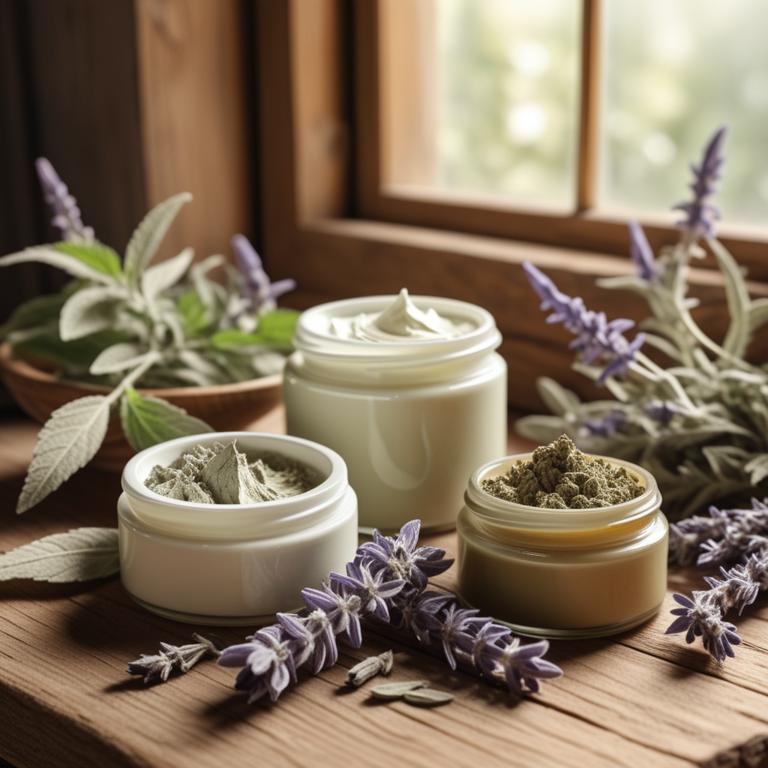
Herbal creams for Headaches are topical preparations made from natural plant extracts, designed to alleviate and prevent headaches by applying a soothing and cooling effect directly to the affected area.
The benefits of using herbal creams to treat headaches include reduced pain and inflammation, improved circulation, and a decrease in stress and anxiety levels.
Examples of herbal creams for headaches include peppermint oil cream, which cools the skin and reduces pain, feverfew cream, which reduces inflammation and prevents migraine attacks, ginger cream, which eases nausea and relaxes muscles, and lavender cream, which calms the mind and promotes relaxation.
Additionally, other herbal creams such as eucalyptus, chamomile, and rosemary are also used to treat headaches due to their anti-inflammatory and analgesic properties.
According to "Phytotherapy research : PTR", creams for headaches may contain ingredients such as menthol and peppermint oil, as per the study, which found positive, preliminary findings on the use of menthol and chamomile as an acute treatment for migraine.
Below there's a list of the 9 best herbal creams for headaches.
- 1. Melissa officinalis creams
- 2. Eucalyptus globulus creams
- 3. Valeriana officinalis creams
- 4. Achillea millefolium creams
- 5. Mentha x piperita creams
- 6. Cinchona officinalis creams
- 7. Lavandula angustifolia creams
- 8. Lavandula stoechas creams
- 9. Rosmarinus officinalis creams
Also you may be interested in...
TODAY'S FREE BOUNDLE
Herb Drying Checklist + Herbal Tea Shopping List + Medicinal Herbs Flashcards
Enter you best email address below to receive this bundle (3 product valued $19.95) for FREE + exclusive access to The Aphotecary Letter.
$19.95 -> $0.00
1. Melissa officinalis creams
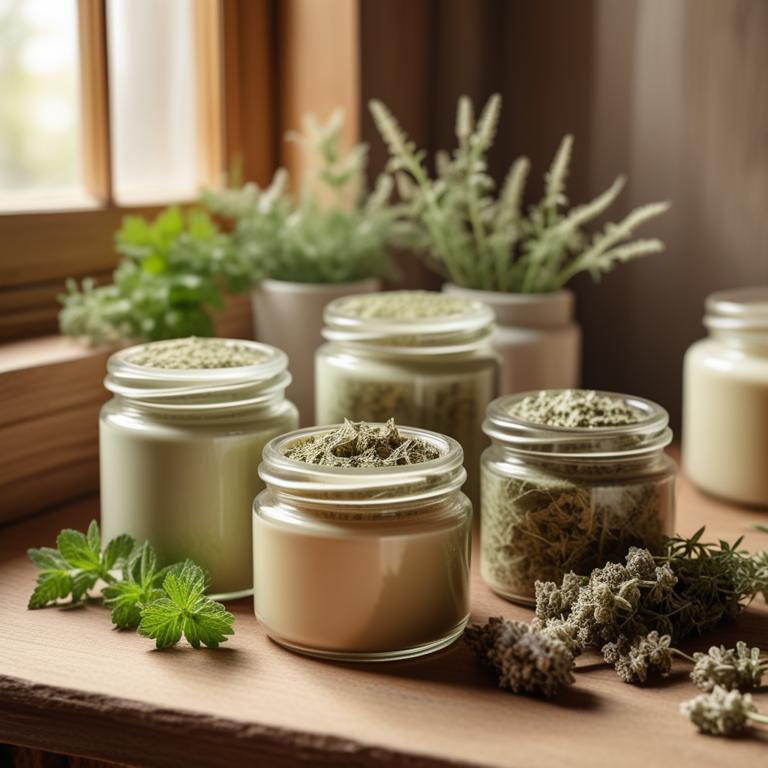
Melissa officinalis creams have been used for centuries to treat headaches due to their calming and soothing properties, which help to reduce stress and anxiety that often trigger these ailments.
The herbal preparation, also known as lemon balm, contains bioactive constituents such as rosmarinic acid and melissic acid, which have anti-inflammatory and antioxidant effects that help to alleviate pain and discomfort associated with headaches.
By promoting relaxation and reducing muscle tension, Melissa officinalis creams help to treat headaches by calming the mind and body, providing relief from migraine and tension headaches.
The benefits of using Melissa officinalis creams for headache treatment include reduced frequency and severity of headaches, improved sleep quality, and a sense of overall well-being.
2. Eucalyptus globulus creams
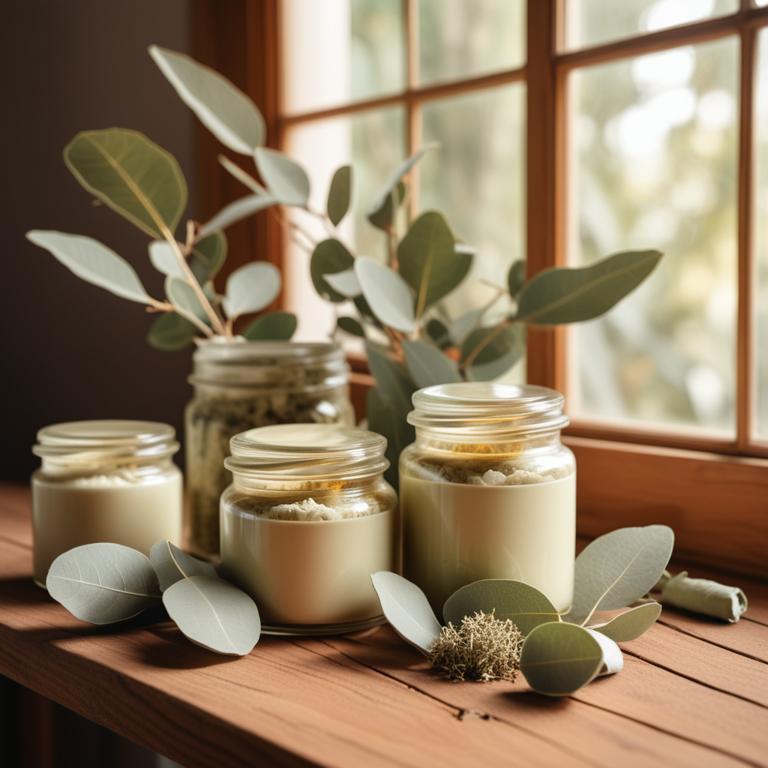
Eucalyptus globulus creams have been traditionally used to treat headaches due to their anti-inflammatory, analgesic, and antispasmodic properties, which help to reduce pain and inflammation in the body.
The bioactive constituents, such as eucalyptol and cineole, present in these creams, are responsible for their therapeutic effects, including the reduction of muscle spasms and the relief of pain associated with headaches.
By applying Eucalyptus globulus creams topically, individuals can experience relief from headaches, including migraines and tension headaches, due to the local anesthetic and anti-inflammatory effects.
The benefits of using these creams include rapid relief from pain, reduced inflammation, and a decrease in the frequency and severity of headaches, making them a popular natural remedy for this common ailment.
3. Valeriana officinalis creams
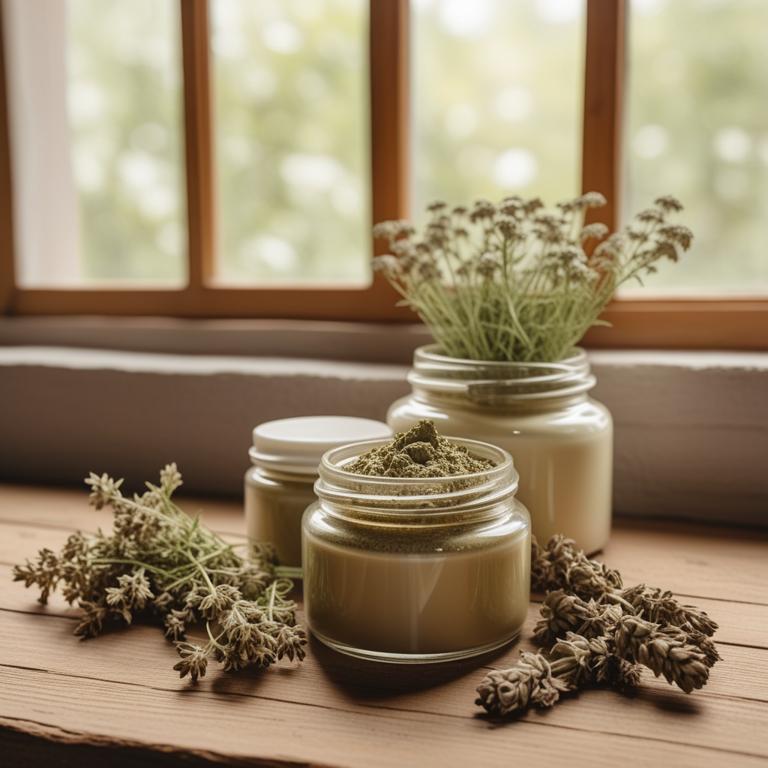
Valeriana officinalis creams are a popular herbal preparation used to treat headaches, including migraines and tension headaches.
This preparation's sedative and analgesic properties help to alleviate pain and reduce muscle tension, providing quick relief from headaches.
The bioactive constituents of Valeriana officinalis, such as valerenic acid, valepotriates, and isovaleric acid, contribute to its therapeutic effects by modulating the central nervous system and promoting relaxation.
The benefits of using Valeriana officinalis creams to treat headaches include reduced frequency and severity of episodes, improved sleep quality, and a decrease in reliance on over-the-counter pain medications.
Related Study
According to "American journal of health-system pharmacy : AJHP : official journal of the American Society of Health-System Pharmacists", Valeriana officinalis creams for headaches have potentially been shown to be safe and may be beneficial based on the fact that valerian has been studied for its efficacy in treating insomnia, suggesting its potential use in headache relief.
4. Achillea millefolium creams
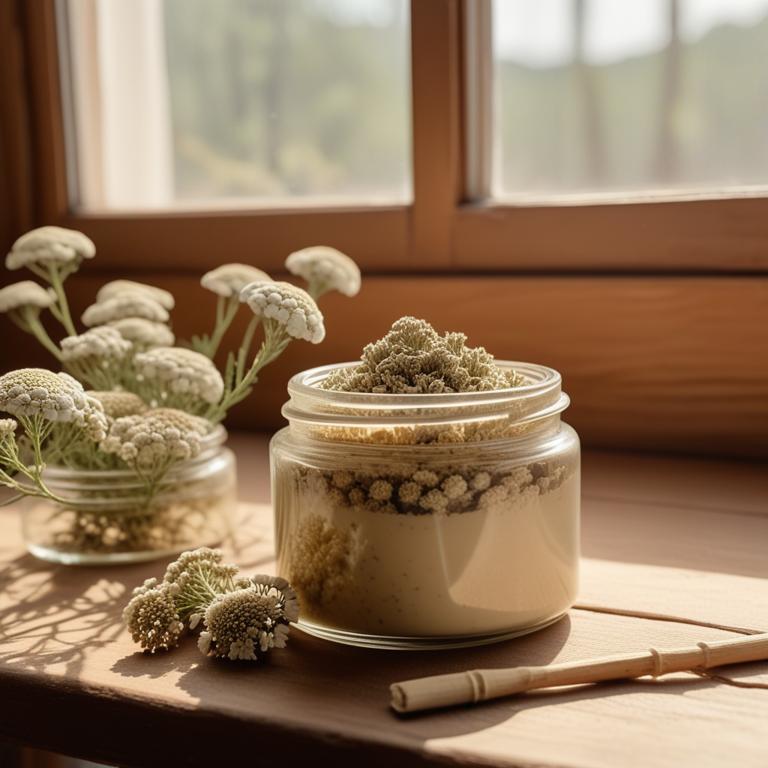
Achillea millefolium creams, derived from the dried flowers and leaves of the Yarrow plant, have been traditionally used to treat headaches due to their anti-inflammatory, antispasmodic, and analgesic properties.
The bioactive constituents of these creams, including flavonoids, sesquiterpenes, and coumarins, help to relax tense muscles, reduce pain and inflammation, and improve blood circulation, thereby alleviating headache symptoms.
By applying Achillea millefolium creams topically, individuals can experience relief from tension headaches, migraines, and other types of headaches by reducing muscle tension and promoting relaxation.
The benefits of using Achillea millefolium creams to treat headaches include natural, non-invasive, and long-lasting relief, making them a popular herbal remedy among those seeking alternative solutions to conventional medications.
5. Mentha x piperita creams
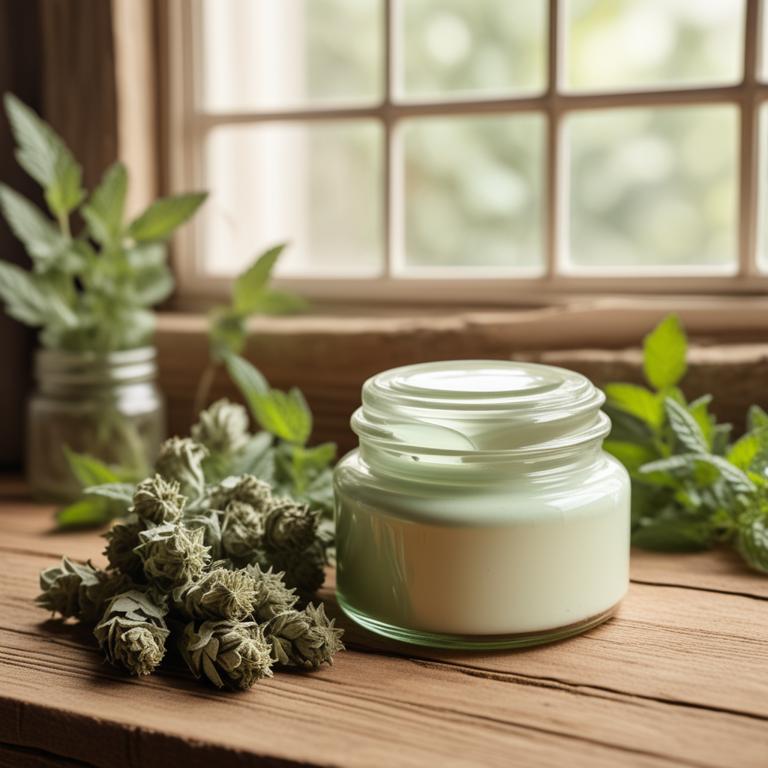
Mentha x piperita creams, derived from the peppermint plant, have been used to treat headaches due to their anti-inflammatory and analgesic properties.
The herbal preparation helps to treat headaches by reducing muscle tension and alleviating pain, thereby providing relief from the symptoms.
The bioactive constituents, including menthol and menthone, have been identified as key compounds responsible for the analgesic and anti-inflammatory effects that contribute to the treatment of headaches.
The benefits of using Mentha x piperita creams to treat headaches include natural relief from pain, reduced reliance on over-the-counter medications, and a decrease in the risk of side effects associated with pharmaceutical treatments.
Related Study
According to "Phytotherapy research : PTR", Mentha x piperita creams for headaches show positive, preliminary findings as an acute treatment for migraine.
6. Cinchona officinalis creams
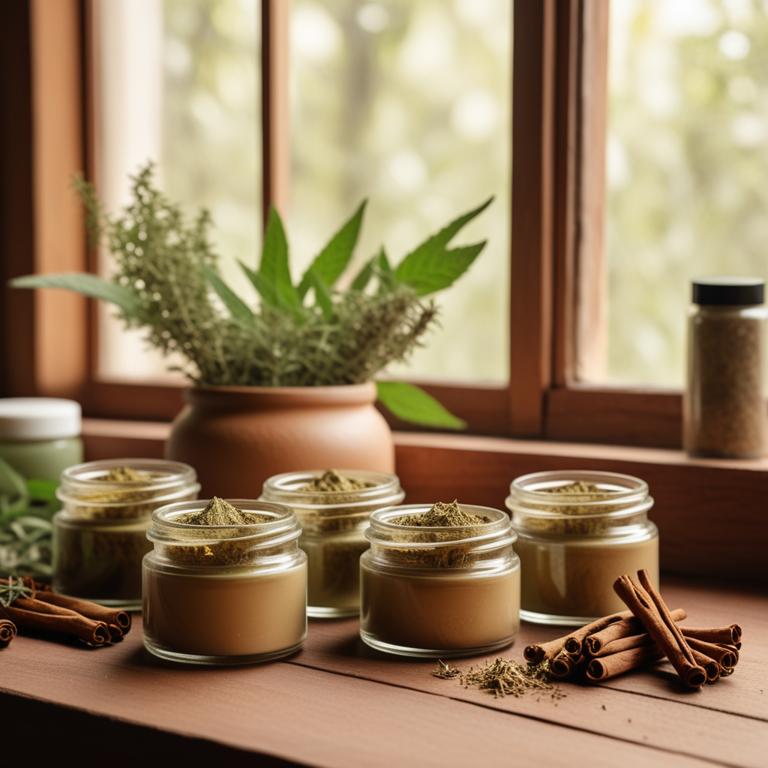
Cinchona officinalis creams have been traditionally used to treat headaches due to their anti-inflammatory, analgesic, and antipyretic properties, which help to reduce pain and inflammation in the body.
These herbal preparations contain bioactive constituents such as quinine, a natural compound that helps to relax blood vessels and alleviate headaches.
The benefits of using Cinchona officinalis creams to treat headaches include their ability to provide quick relief from symptoms, reduce the frequency and severity of episodes, and promote overall well-being without the risk of addiction or side effects associated with conventional pain medications.
By harnessing the natural healing properties of Cinchona officinalis, individuals can find a safe and effective solution to manage their headaches and improve their quality of life.
7. Lavandula angustifolia creams

Lavandula angustifolia creams have been used to treat headaches due to their soothing and calming properties, which help to reduce tension and promote relaxation.
The bioactive constituents, including linalool and linalyl acetate, play a crucial role in treating headaches by reducing inflammation and modulating the nervous system.
By applying these creams topically, individuals can experience relief from headaches, including migraine and tension headaches, as they help to calm the mind and body.
The benefits of using Lavandula angustifolia creams for headache treatment include natural pain relief, reduced anxiety, and improved sleep quality.
8. Lavandula stoechas creams
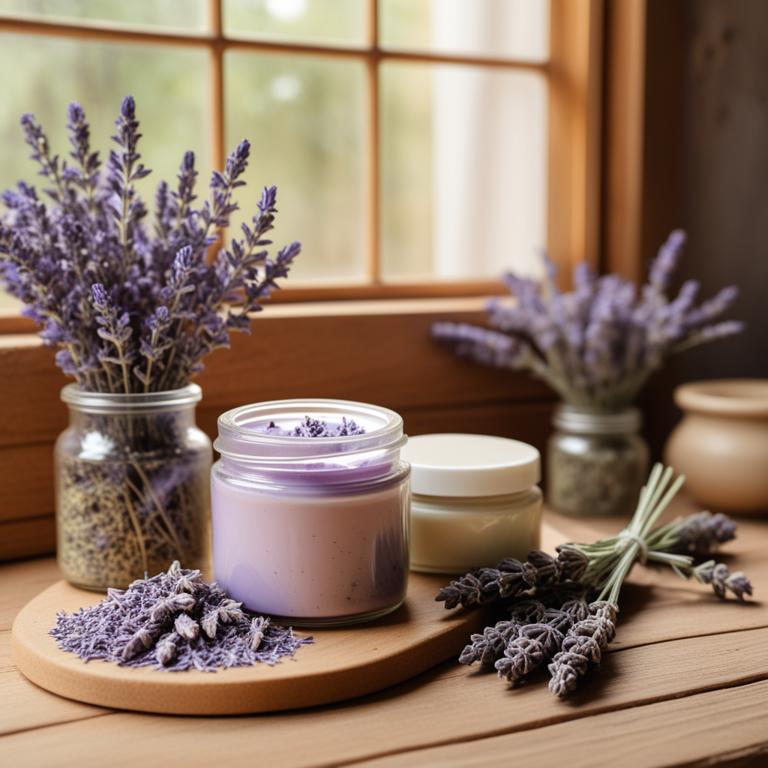
Lavandula stoechas creams have been traditionally used to treat headaches, leveraging its analgesic and anti-inflammatory properties to provide relief from pain and discomfort.
The bioactive constituents, including linalool and linalyl acetate, are responsible for its therapeutic effects, as they possess potent anti-inflammatory and antioxidant properties that help to reduce inflammation and alleviate pain.
By applying Lavandula stoechas creams topically, it helps to relax tense muscles, reduce headaches caused by stress and anxiety, and promote a sense of calmness.
The benefits of using this herbal preparation to treat headaches include its natural and non-invasive approach, making it a safe and effective alternative to conventional medications.
9. Rosmarinus officinalis creams
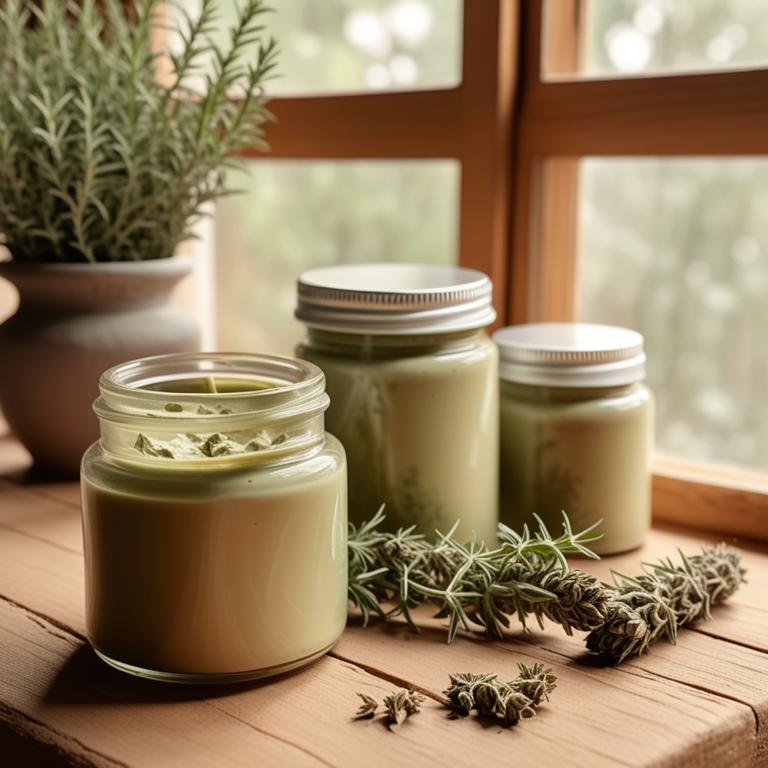
Rosmarinus officinalis creams have been traditionally used to treat headaches due to their anti-inflammatory and analgesic properties, which help to reduce pain and inflammation in the affected areas.
The herbal preparation's ability to relax muscles and improve blood circulation also plays a significant role in alleviating headache symptoms.
Rosmarinus officinalis creams contain bioactive constituents such as carnosic acid, rosmarinic acid, and camphor, which have been shown to possess anti-inflammatory and antioxidant properties that help to combat headache-causing factors.
By using Rosmarinus officinalis creams, individuals can benefit from their fast-acting pain relief, reduced frequency of headaches, and improved overall well-being.
Related Study
According to "Evidence-based complementary and alternative medicine : eCAM", Rosmarinus officinalis creams for headaches may have some potential benefits due to its anti-inflammatory and antinociceptive effects, particularly when combined with other medicinal plants, such as Syzygium aromaticum, in a synergistic manner.